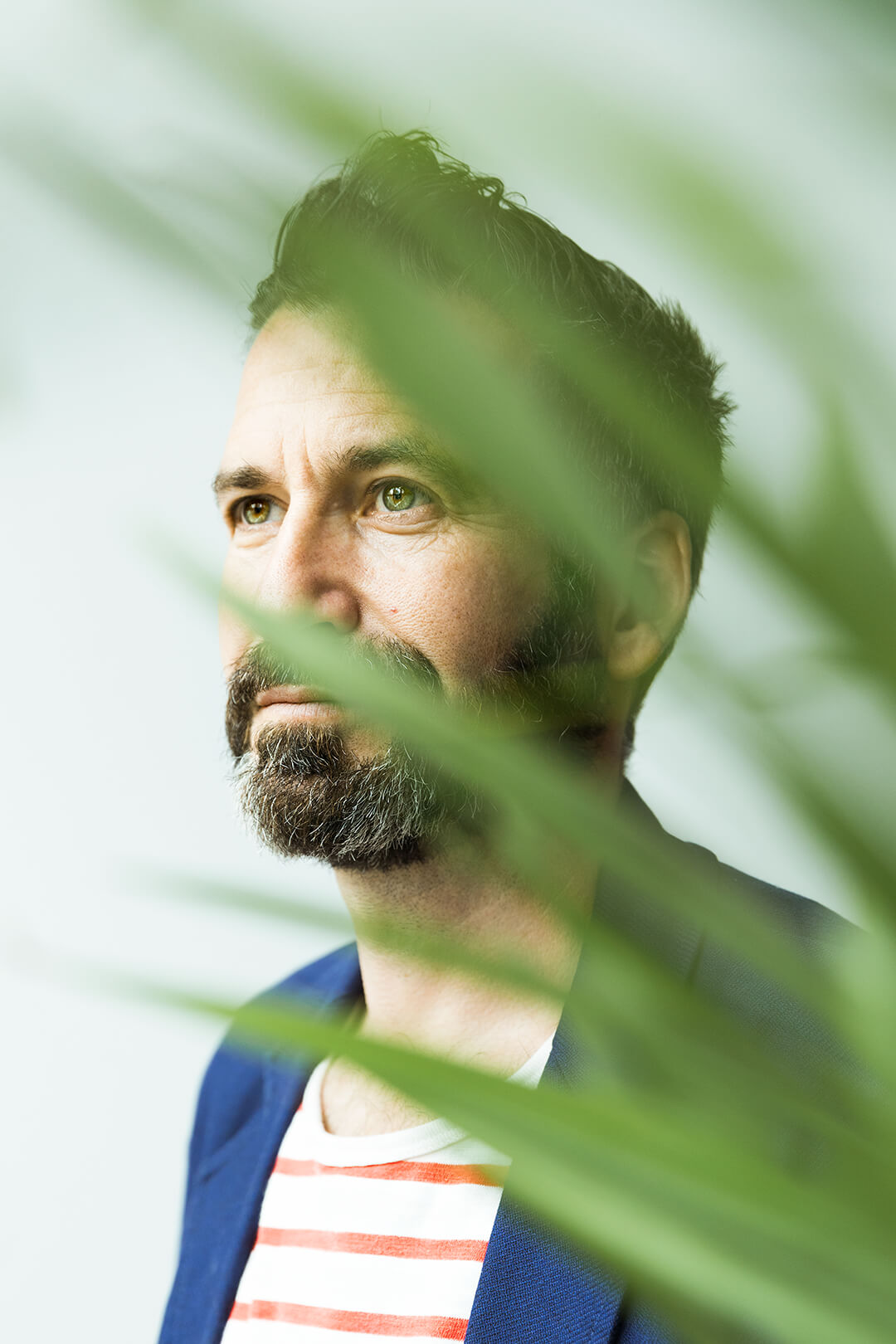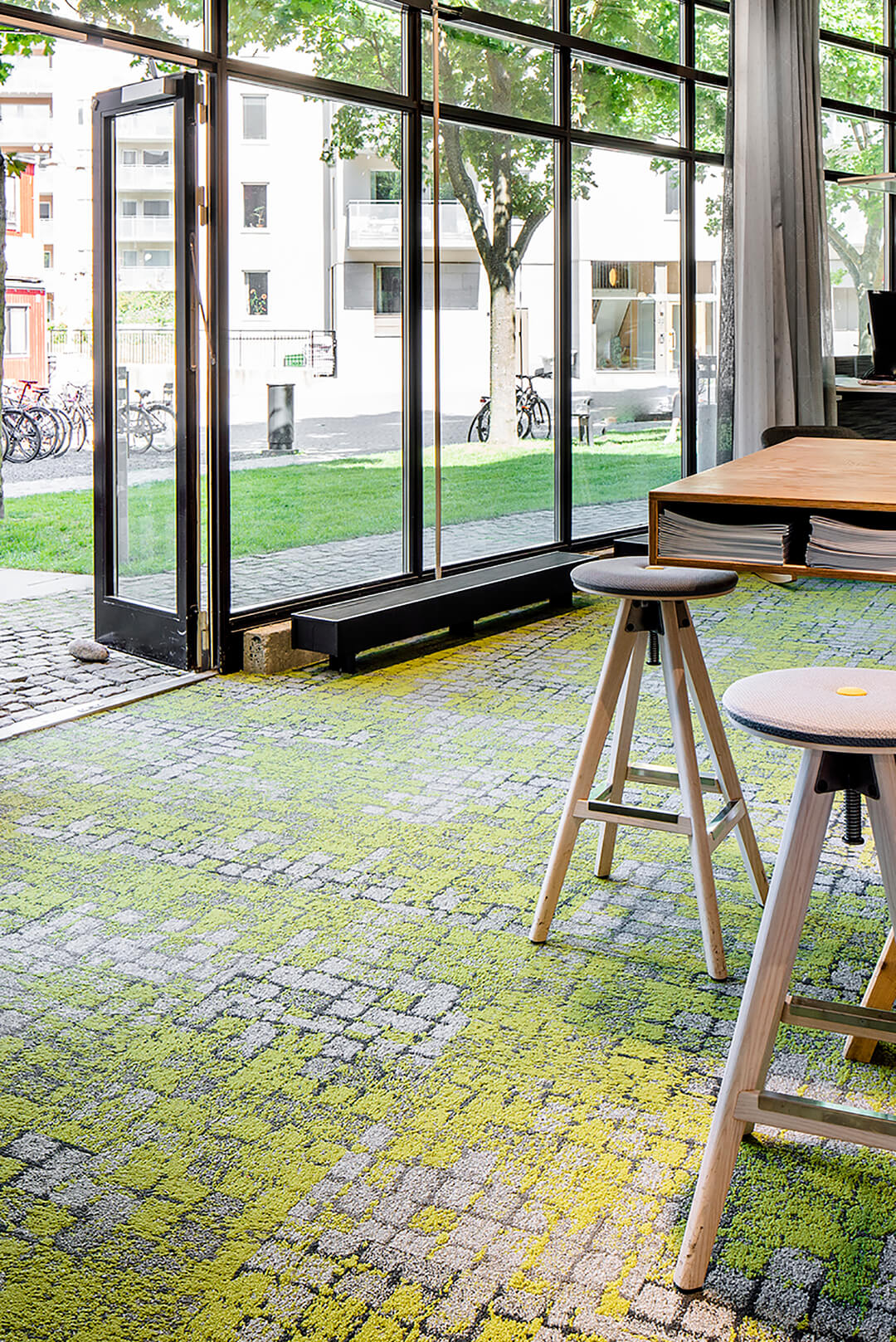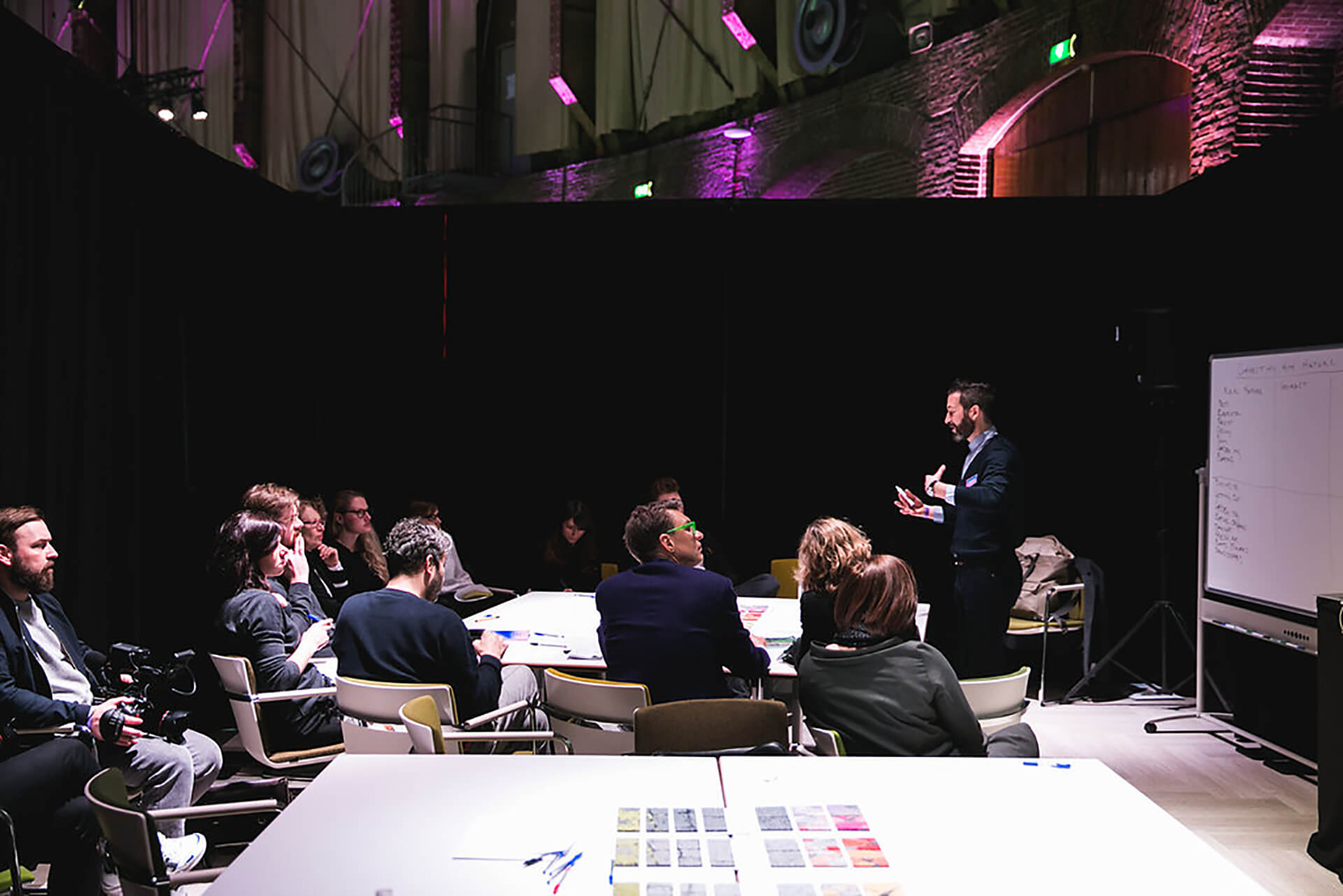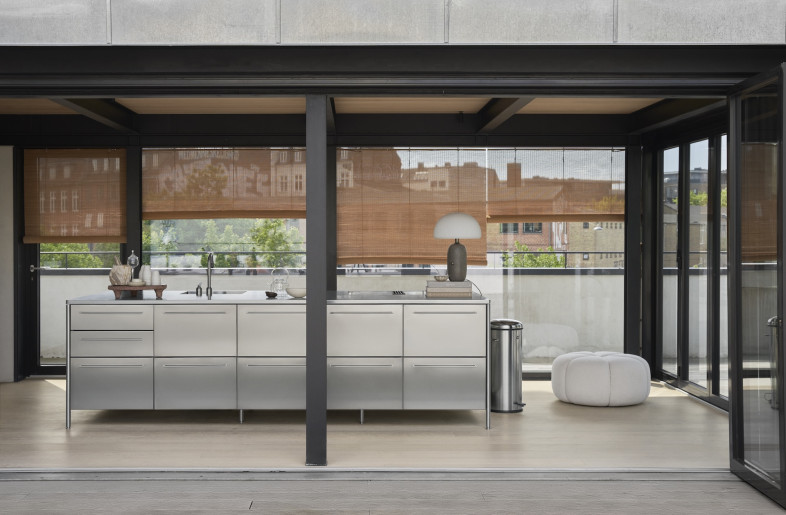Frame speaks to design-sustainability advocate Oliver Heath in Frame 123 about taking a natural approach to workspace design and how this can encourage health, wellness and a deeper human connection.
Your office specializes in biophilic design. What does the term mean, and why is it important?
OLIVER HEATH: Biophilia refers to our innate love of nature and living things. Biophilic design provides access to and imitates nature and, like nature itself, reduces stress, aids recuperation and, in doing so, boosts productivity and creativity. It’s a means of improving our healing connection with the natural world. Biophilic design is known to increase wellbeing at work, in hospitals and in many other building types.

Where’s the evidence for this?
Over the past 35 years, numerous studies have shown that staff perform better, and experience less sickness and stress, in biophilic workspaces. There are lots of statistics. For example, modular-flooring brand Interface’s recent ‘Human Spaces’ report finds that access to nature, including sunlight and plants, boosts worker wellbeing by 15 per cent and productivity by 6 per cent. The enormous amount of data is extremely compelling, even for those who struggle to appreciate the value that good design can bring.
So there are economic reasons why biophilic design should be an important consideration in the workplace.
Yes. The conversation around sustainable buildings has a lot to do with engineering, energy use and so forth. Typically though, energy makes up only 1 per cent of business costs, while people amount to 90 per cent, mainly in wages and benefits. So there’s a tremendous opportunity for design to play a role in creating biophilic spaces that reduce people costs by enhancing wellbeing – and in cutting the price of absenteeism and high staff turnover. In addition, biophilic offices help to attract talent – a key reason that Amazon built its new rainforest-like Spheres complex in Seattle.
What are the key concepts of biophilic design?
First, establishing direct contact with nature – think access to natural light, views, water, air and greenery. Second, developing natural analogues or evoking a sense of nature through material, colour, texture and form. Third, triggering human responses to space – responses that can be either aspirational and energizing or calming and restorative, just like nature itself.

Moss carpet tile by Interface is part of the biophilic Human Connections product range
How far has the biophilic office advanced?
Not far enough. The Interface survey of 7,600 employees across 16 countries found that 47 per cent have no access to natural light and 58 per cent have no plants. That’s a sad state of affairs.
How are you working to change this?
At Oliver Heath Design, we are currently involved in a comprehensive three-year study with the Building Research Establishment (BRE) in Watford, which we foresee will result in biophilic standards that can be incorporated into the carbon-centric BREEAM and LEED building codes. The study entails remodelling and evaluating a floor of BRE’s offices in response to employee and environmental surveys. We’ll be looking at three levels of intervention, from simple solutions such as adding plants and placing desks next to windows; to mid-range refurbishments that involve nature-inspired textures, colours and materials; to high-level interventions that include water features and circadian lighting.
Biophilic design is all about versatility. With offices, you are usually talking refits, and it seems that even simple and relatively cheap interventions can have a very positive effect. Just making sure that employees have access to plants and natural light will raise productivity by 6 per cent and creativity by 15 per cent.
You are also an ambassador for Interface. What does that position encompass?
Basically, I present seminars and workshops for architects and interior designers on Interface’s biomimetic approach to design. Interface not only uses renewable energy sources and reduces waste in its production facility, thus boosting sustainability, but also evokes nature in its surfaces and textures to create biophilic designs. Randomized pile heights, patterns and colours give rise to a feeling of naturalness in Interface floor tiles, which hold an elemental appeal for both designers and end users. It’s a simple way of inspiring wellbeing and biophilic design, from the ground up.

Oliver Heath runs workshops on biophilic design for designers and architects at Frame Lab, Wellness Lab 2018
 Interface popped up at Frame Lab, Wellness Lab 2018 and focused on how design enhances human wellbeing in every aspect of the built environment.
Interface popped up at Frame Lab, Wellness Lab 2018 and focused on how design enhances human wellbeing in every aspect of the built environment.
What advice do you have for designers setting out to incorporate biophilia in their work?
Observe the core principles and use an evidence-based strategy to convince clients of the value of your services. You need to inspire and motivate all stakeholders involved in a project to reduce the risk of short-term capital-expenditure ambitions taking precedent over longer-term human-wellbeing gains.
What pitfalls do you see in current mainstream office design?
In my opinion, the problem is that many workplace designs are little more than brand messages. I believe we should focus instead on making people feel amazing and on generating positivity – using an intrinsic rather than an extrinsic approach to the office interior.
Buildings and nature should work as one for the benefit of both humankind and the wider environment
Why did you gravitate to this field?
Growing up in Brighton by the sea was part of it, and later I became a windsurfing instructor. Then, while studying architecture at the Bartlett, UCL, my delight in time spent in nature melded with my ideas about the built environment. Buildings and nature should work as one for the benefit of both humankind and the wider environment. Biophilic design is a relatively new ethos, which adds greatly to carbon-centred sustainability, making it an area I wanted to invest in.
So you see biophilic design making a wider environmental impact . . .
Yes, I do. Once we understand that our health and wellbeing are intrinsically linked to that of the nature around us, I believe we will be motivated to preserve our natural environment better.










